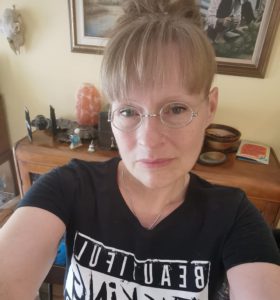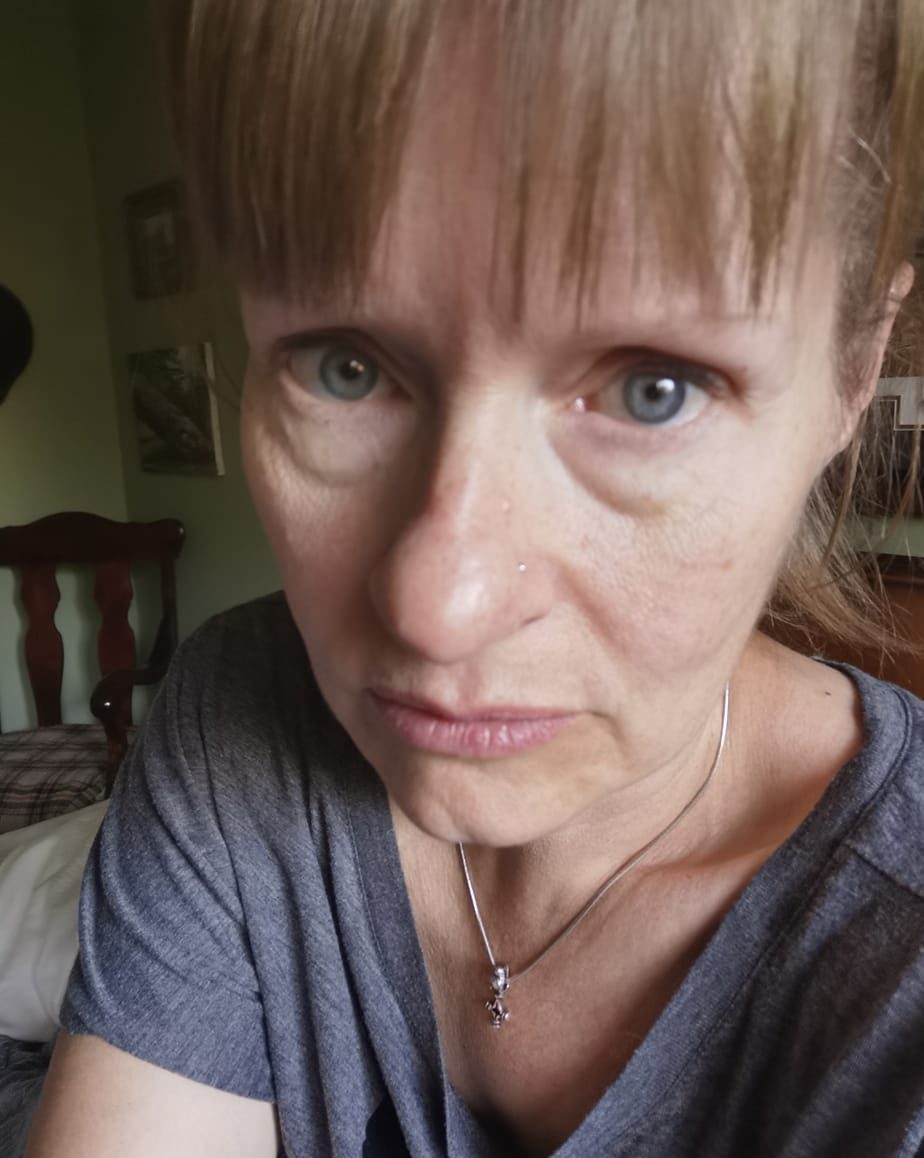It started with a mild — but persistent — cough and quickly dissolved into what Kirsten Rudolph describes as four months of ‘living hell.’
The 52-year old Vanderhoof tattoo artist, and former Prince George resident, is one of many COVID ‘long-haulers.’
Meaning, people still experiencing severe symptoms months after their initial infection.
“I felt like I was drowning in fire. It literally felt like I couldn’t get a breath, I couldn’t inflate my lungs and the coughing didn’t stop,” said Rudolph.
She noticed the cough on March 15 — one day after Provincial Health Officer Doctor Bonnie Henry announced Northern Health’s first two cases.
At that time, there was no evidence of community spread.
“I thought it was allergies or the cleaners I use in my shop because they can be pretty harsh,” recalled Rudolph,
“After about five or six days, it was keeping me up at night.”
She suspects she contracted the virus from a client in her tattoo shop that month.
Rudolph is also aware of others in her circle who were ill at the same time she was.
“We were never really able to pin it down,” she said. “It was either community spread or one of my clients.”
Prior to getting sick Rudolph lived an active lifestyle, often kayaking, walking, and gardening in her spare time.
“I was always doing things, I was always quite active, out and about,” she said, “No significant health issues at all.”
She made a trip to the emergency room at Vanderhoof’s St. John Hospital on March 20, complaining of a nagging cough and chest pain.
Rudolph says she was sent home with an inhaler, assured by her doctor it wasn’t COVID-19.
“I was drinking Buckley’s like it was maple syrup, it was crazy,” she remembers.
Another week went by with no improvement, and that’s when the fatigue set in, followed quickly by shortness of breath.
This prompted Rudolph to return to the emergency room a second time, where it was discovered she had pneumonia in her left lung.
Within 24 hours, she was so exhausted that even routine trips around the house required a massive effort.
“It was like a roller coaster. For the next five days, I thought I was dying. I could not get a decent breath of air, I thought I was suffocating.”
She also experienced a diminished sense of taste and smell, backpain between her shoulder blades, and fluid build-up around her lungs.
After completing a six-day course of antibiotics, she felt back to normal but soon deteriorated.
“I laid a brick pathway and transplanted eight hundred plants, did a bunch of work, and then the cough came back,” she said.
“That started nine weeks of basically hell. It was up and down every five to nine days. I would have burning lungs, couldn’t breathe, then for two or three days I would feel better, and then crash again.”
Rudolph’s condition began to improve slightly at week nine, it became easier to breathe and her cough abated.
However, she developed a condition called pleurisy, in which the pleura — two large, thin layers of tissue that separate the lungs from the chest wall — become inflamed.
It causes severe chest pain that worsens with breathing, and Rudolph dealt with it for another ten weeks.
This was coupled with back pain, pins and needles, and ‘body vibrations.’
“My doctors looked at me and said, we don’t know what’s going on with you. All your tests are coming back normal but clearly, you are sick. We just couldn’t figure it out.”

In July, months after the onset of her illness and still dealing with symptoms, Rudolph was scheduled for a CT scan.
Her doctor informed her she had suffered a double lung collapse — thought to have occurred in April or May.
“It’s turned into scar tissue. I’m essentially missing the bottom portion of my lungs now. That’s certainly made life a little interesting.”
While the initial infection lasted just nine weeks, Rudolph started developing complications down the road, like an irregular heartbeat and issues with body temperature regulation.
She was not tested for COVID-19 until day 23 of her illness, as testing was not available to the general public in the early days of the pandemic.
While the test came back negative, the subject of COVID-19 was broached once again when Rudolph failed a cardiac stress test at the University Hospital in Prince George.
She explained her situation to the cardiologist, who recognized Rudolph’s symptoms.
“She said you’ve got COVID-19, we have been treating other people just like you.”
Since then, Rudolph has also been diagnosed with Mast Cell Activation Syndrome, a condition where the patient experiences repeated episodes of anaphylaxis – allergic symptoms such as hives, swelling, low blood pressure, and difficulty breathing.
Brain fog has been an added challenge and her left pupil is now permanently dilated.
“I sort of look like Hypnotoad because of the swelling in my optic nerve. It’s kinda funny, disturbing too, but also funny,” she joked.
The tattoo artist has been back to work for just two weeks, but she admits it has been a struggle.
“The fatigue is back in spades. I have to be really careful in what I do,” she explained.
“At work, I have to sit down when I’m tattooing clients, but I also have to keep moving otherwise I feel lightheaded and dizzy.”
Her lungs, joints and muscles are sore, and her schedule has been reduced to a fraction of what it was — going from three clients a day to two to four a week.
“It’s been a huge hit on the bank account, to be honest.”
Rudolph, like other long-haulers, feels invalidated and passed over by the healthcare system.
As she was never formally diagnosed, she says her symptoms are being treated at face value and she is not being offered support by her healthcare providers.
“There’s a lot of us out there, who got sick in early March, or even February or January, who are meeting the post-COVID symptom list, but we are being ignored. We are absolutely being ignored.”
Among the more frustrating things she has witnessed throughout the pandemic, are anti-mask events in the province.
“It’s not an infringement of your rights, it is common courtesy,” said Rudolph.
“This is not about you. This is not about your freedom. This is not the hill you need to die on, this is a pandemic that is affecting everyone and you all need to get your heads out of the sand if you think that this a joke.”
To others going through something similar, she says the best thing to do is to get connected with a community.
Rudolph herself has found comfort and support on COVID-19 long hauler groups on social media.
If you or a loved one has been affected by COVID-19 and would like to share your story, please contact [email protected]
Something going on in the Prince George area you think people should know about?
Send us a news tip by emailing [email protected].







